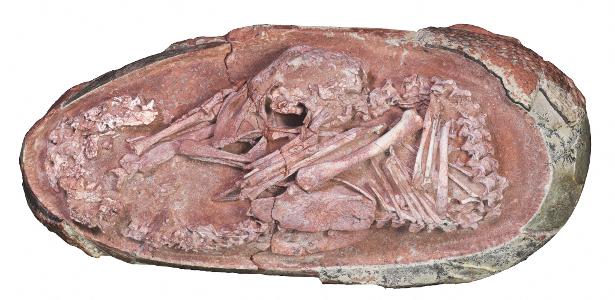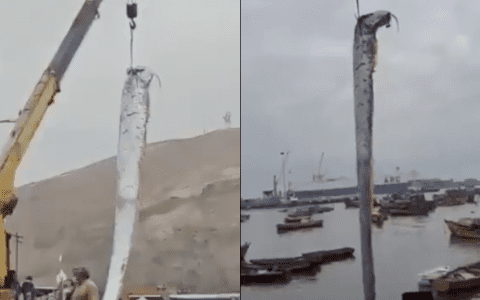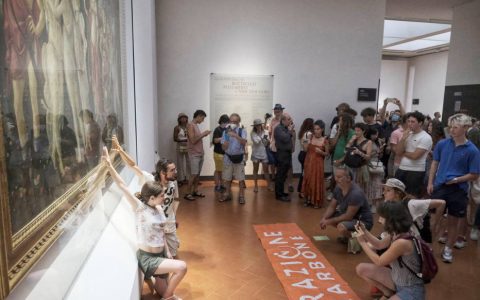
Scientists on Tuesday (21) announced the discovery of a perfectly preserved dinosaur embryo that dates back at least 66 million years and is preparing to hatch.
The fossil was found in Ganzhou, southern China, and belongs to a dentureless theropod dinosaur, or Oviraptosaurus, which scientists have dubbed “Baby Yingliang”.
“This is one of the best dinosaur embryos ever found,” researcher Phion Waisam Ma of the University of Birmingham, who co-authored the publication in the journal iScience, told AFP.
Ma and his colleagues found the embryo with its head under its body, legs on either side, and its back curved, a posture not seen before in dinosaurs but similar to that of modern birds.
In birds, this behavior is controlled by the central nervous system and is called “folding”. The chicks preparing for hatching break the shell with their beak and keep their head under the right wing to keep them steady.
Embryos that fail to create this condition are more likely to die from a failed hatch.
“This indicates that such behavior in modern birds first evolved among dinosaurs, their ancestors,” Ma said.
An alternative to this folding can be similar to modern crocodiles. They position themselves as if they are sitting, with their heads tilted towards their chest, to hatch.
decades in a warehouse
Ovirraptorosaurs, or “egg-stealing lizards”, were feathered dinosaurs that lived in what is now Asia and North America during the Late Cretaceous period.
They had a variety of beaks and diets, and ranged in size from a modern turkey to a giant gigantoraptor eight meters long.
The “Yingliang Baby” is 27 cm long from head to tail and is found inside a 17 cm egg at the Yingliang Stone Nature History Museum.
Researchers believe the creature is 66 to 72 million years old and may have been preserved when the egg was buried as a result of a flood, protecting it from carrion animals for so long.
If it reached adulthood and fed on plants, it would grow to two or three meters in length.
The specimen is one of several egg fossils that have been forgotten in deposits for decades.
The team of scientists suspected that they might contain unborn dinosaurs and broke off part of the egg to find the embryo inside.
“This dinosaur embryo inside this egg is one of the most beautiful fossils I have ever seen,” Professor Steve Brusset from the University of Edinburgh and a member of the research team said in a statement.
“This small dinosaur resembled a baby curled up in its egg in its prenatal stage, providing further evidence that many of the characteristics of today’s birds evolved from their dinosaur ancestors,” he continued.
Scientists hope to study “Baby Yingliang” in more detail using advanced scanning techniques to map its entire skeleton, including skull bones, as part of its body is still covered in rock.



